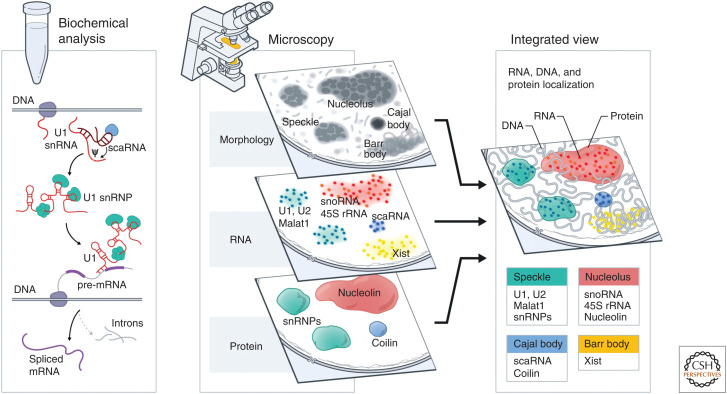Figure 2.
Two parallel approaches converged to uncover a central role for RNA in nuclear organization. As biochemical and microscopy methods matured, the parallel discoveries regarding functional noncoding RNAs (ncRNAs) and nuclear structures started to converge. In the 1970s, biochemical approaches uncovered that many RNAs are not translated into proteins and are retained within the nucleus. Several of these ncRNAs play key roles in nuclear function, including small nuclear RNA (snRNA) biogenesis (e.g., small Cajal body-associated RNAs [scaRNAs]) and pre-mRNA splicing (e.g., snRNAs). In parallel, nuclear bodies were first observed as cytological features in the nucleus more than 100 years ago. Later, advances in microscopy methods made it possible to visualize the spatial localization of specific RNA (via in situ hybridization) and protein molecules (via immunofluorescence or fluorescent proteins) in the nucleus. This led to the discovery that many functional ncRNAs are enriched within specific nuclear bodies and, subsequently, that several ncRNAs can play central roles in their organization. Integrating these biochemical and localization discoveries provided indications of the functional role of RNA in the organization of various nuclear bodies.

